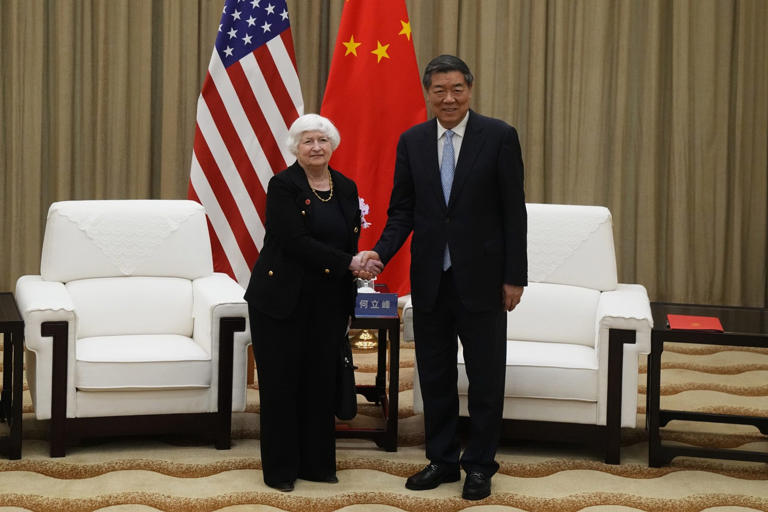The recent visit of Treasury Secretary Janet Yellen to Beijing has spotlighted the critical importance of economic relations between the United States and China. Against a backdrop of escalating tensions and disagreements, Yellen’s diplomatic mission seeks to mitigate frictions and foster cooperation, particularly as China grapples with a host of economic challenges.
Chief among these challenges is China’s economic slowdown, which has been exacerbated by a range of factors including a real estate crisis, diminishing growth rates, and elevated levels of youth unemployment. Moreover, U.S. restrictions on key technologies, such as semiconductor chips crucial for artificial intelligence, have further strained economic ties between the two nations.
Renowned strategist Ed Yardeni’s characterization of China potentially evolving into “the world’s largest nursing home” underscores the gravity of the situation, pointing to demographic shifts and their implications for economic growth. However, Nicholas Lardy, a seasoned expert at the Peterson Institute for International Economics, offers a more sanguine perspective, cautioning against premature pessimism regarding China’s economic trajectory.
Lardy dispels five common misconceptions about China’s economic landscape. Firstly, he challenges the notion that China is no longer closing the economic gap with the United States, citing projections that suggest China’s GDP measured in renminbi is poised to surpass that of the U.S. Secondly, he rebuffs claims of weak income, spending, and consumer confidence in China, citing robust real per capita income growth and resilient consumption patterns.
Furthermore, Lardy addresses the misconception of entrenched deflation in China, highlighting core price increases and contextualizing declines in specific sectors within broader economic trends. He also unpacks lower property investment as a misconception, explaining that while housing starts have declined, real estate investment has remained relatively stable.
Lastly, he challenges the belief that Chinese entrepreneurs are fleeing the country, citing data on private investment growth and the proliferation of family-owned businesses. Despite these rebuttals, U.S. and European executives express growing apprehensions about China’s economic outlook, citing factors such as regulatory uncertainties and trade tensions.
As the U.S. and China navigate these complex economic dynamics, the imperative for constructive engagement and strategic collaboration becomes increasingly apparent. Effective cooperation between the two economic giants is essential not only for maintaining global economic stability but also for fostering mutual prosperity and sustainable growth.
